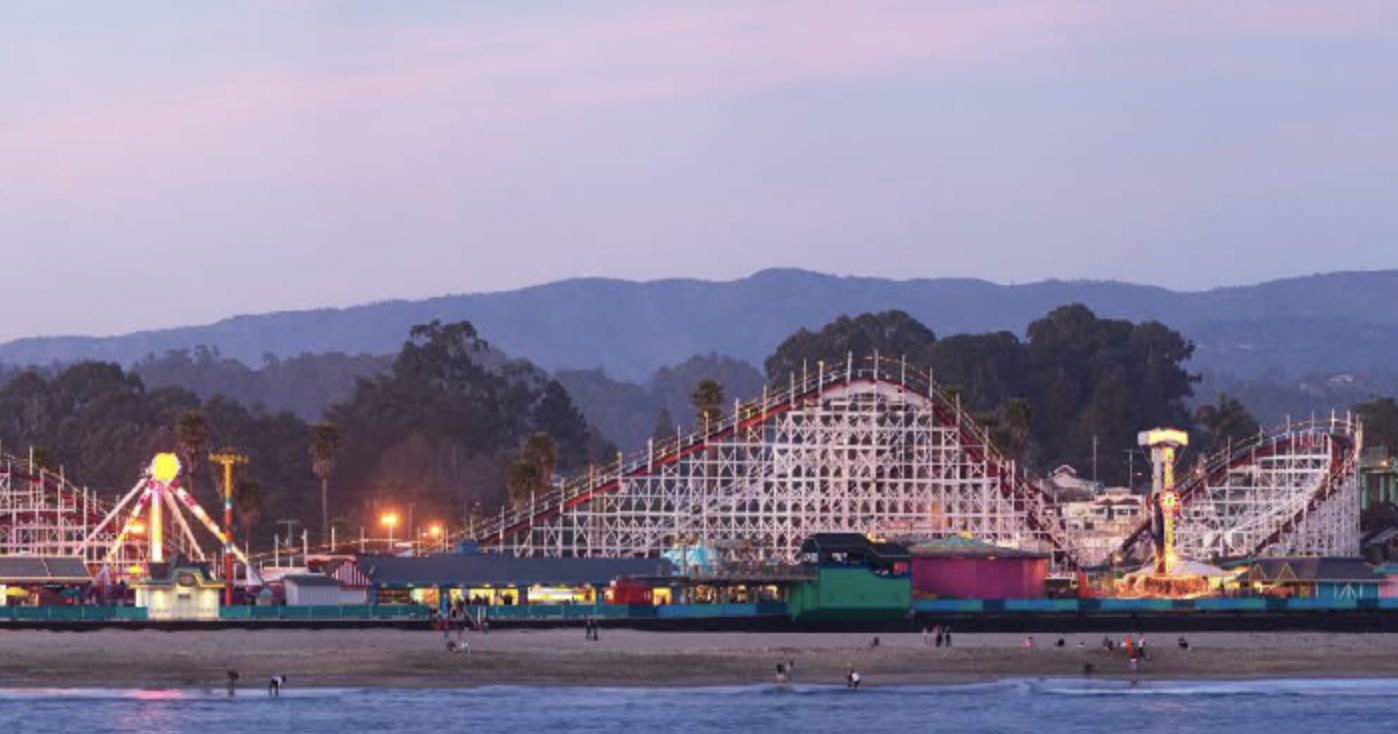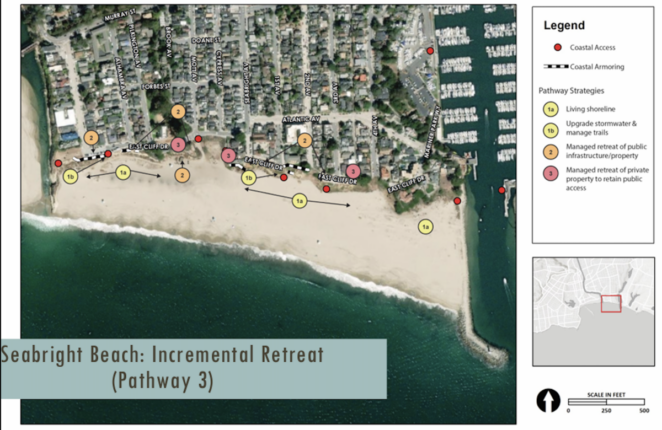Resilient Coast Santa Cruz: Cross-sector collaboration for long-term resilience

Summary
Resilient Coast Santa Cruz (Resilient Coast) is an initiative of the City of Santa Cruz aiming to address coastal adaptation for the long-term resilience of the City’s coastline. Informed by scientific work and community vision, Resilient Coast utilizes an adaptation pathways approach supported by immersive and interactive tools, such as virtual reality used to facilitate community engagement.
This case study is an abridged case from the original text in the report Adapting Coastal Cities and Territories to Sea Level Rise in North America – U.S. West Coast: Challenges and Leading Practiceswhich can be downloaded from that weADAPT article. Please access the original text for more detail, research purposes, full references, or to quote text.
Objectives
Resilient Coast aims to build awareness, increase adaptive capacity and strengthen the long-term resilience along the 4 miles of Santa Cruz shoreline in the face of ongoing erosion, sea-level rise and storms. Through cross-sector collaboration and community engagement, the initiative integrates community priorities (such as public access to the coastline, preservation of habitats, and transportation needs) and visions into the development of adaptation pathways.
Methods and Tools
Through the Resilient Coast initiative, the community developed adaptation pathways for its beaches and blufftop locations. The proposed pathways articulate several potential adaptation options over different time horizons, including living shorelines, hard protection, increased pump capacity, and managed retreat for certain coastal facilities and infrastructure in the longer term. Resilient Coast led to the production of the West Cliff Drive Adaptation and Management Plan and complementary policies in the City’s Local Coastal Program.

Outcomes and Impacts
- The City had over 1,500 touchpoints with the community during Resilient Coast 1.0 through over 50 traditional and nontraditional engagement activities.
- The monitoring network consists of 1 tidal gauge, 9, cameras, 4 Coast Snap community science stations, and drone imagery along with data sources, which will be all brought into a publicly available dashboard providing triggers, threshold tracking and alerts, as well as shoreline change analytical tools.
- The January 2023 bomb cyclone event caused nearly $10M in damages to West Cliff Drive, forcing the City to take one-lane of traffic out of service and test a one-lane, one-way scenario (i.e., incremental managed retreat), a concept that previously had mixed community support.
- Through engagement activities, frontline neighborhood residents produced a family emergency planning guide distributed throughout the neighborhoods.
Lessons Learnt
- Spending time building relationships with frontline community leaders and residents by sharing meals, designing meetings with them, and compensating them for their time helped establish trust and gain sustained engagement.
- Leveraging academic partnerships added capacity to the City to focus long-term on frontline communities and evaluate the efficacy of our engagement efforts.
- Elected officials serving as project champions demonstrated the importance of this work and brought attention to the initiative.
- The commitment of twelve different federal, state, and local agencies, higher education institutions and NGOs brought together all the expertise and knowledge necessary to design a sophisticated coastal change monitoring network.
This case study is taken from the following report with suggested citation: Ocean & Climate Platform. (2023). Adapting Coastal Cities and Territories to Sea Level Rise in North America – U.S. West Coast: Challenges and Leading Practices. Ocean & Climate Platform. 56 pp.
Related resources
- East Palo Alto Rain Garden Project – Centering communities in resilience-building
- Results and impacts of the UCSC Coastal Resilience Lab
- Coastal Flooding, Climate Adaptation and Community Engagement in the City of Surrey, Canada
- The power of collaborative governance: Managing the risks associated with sea-level rise in Cape Town, South Africa
(0) Comments
There is no content